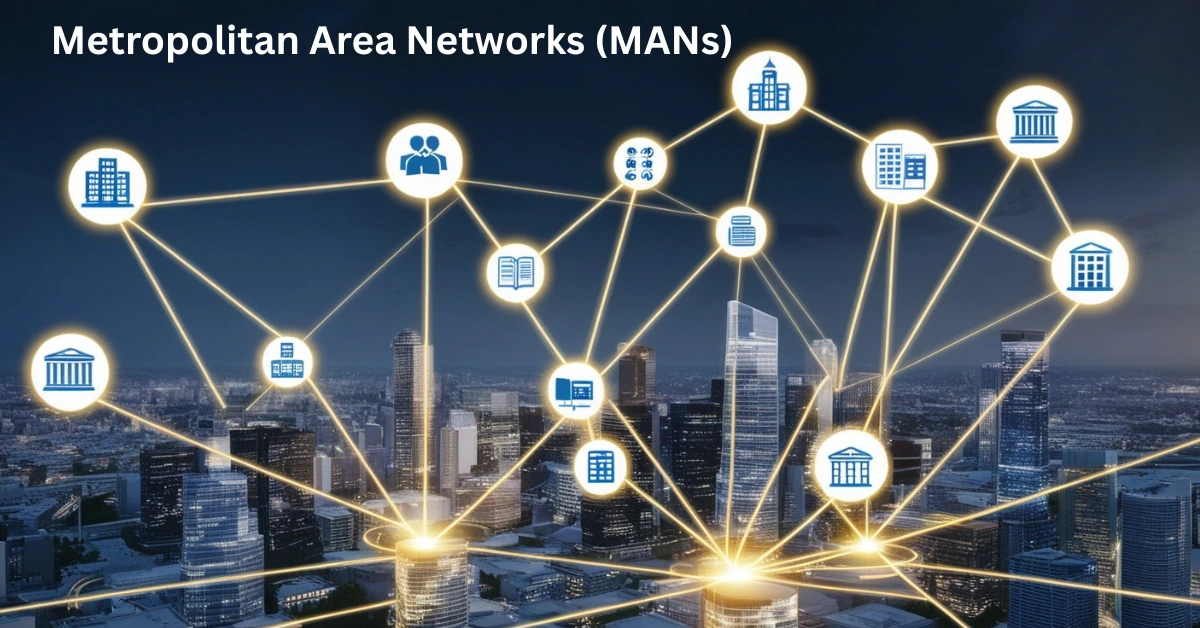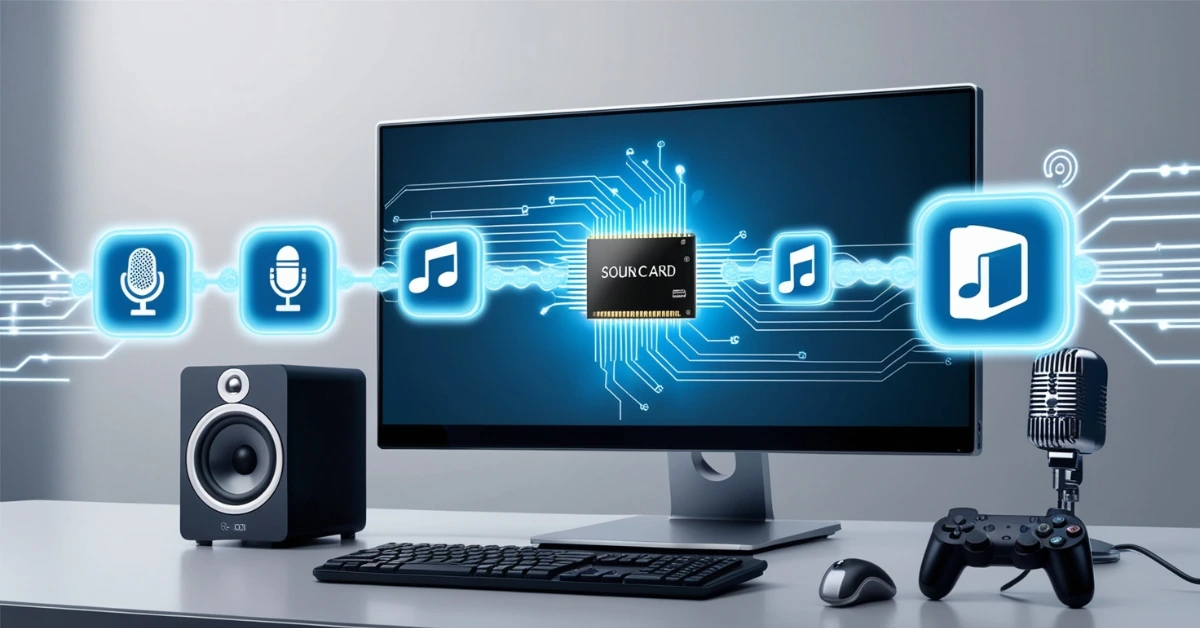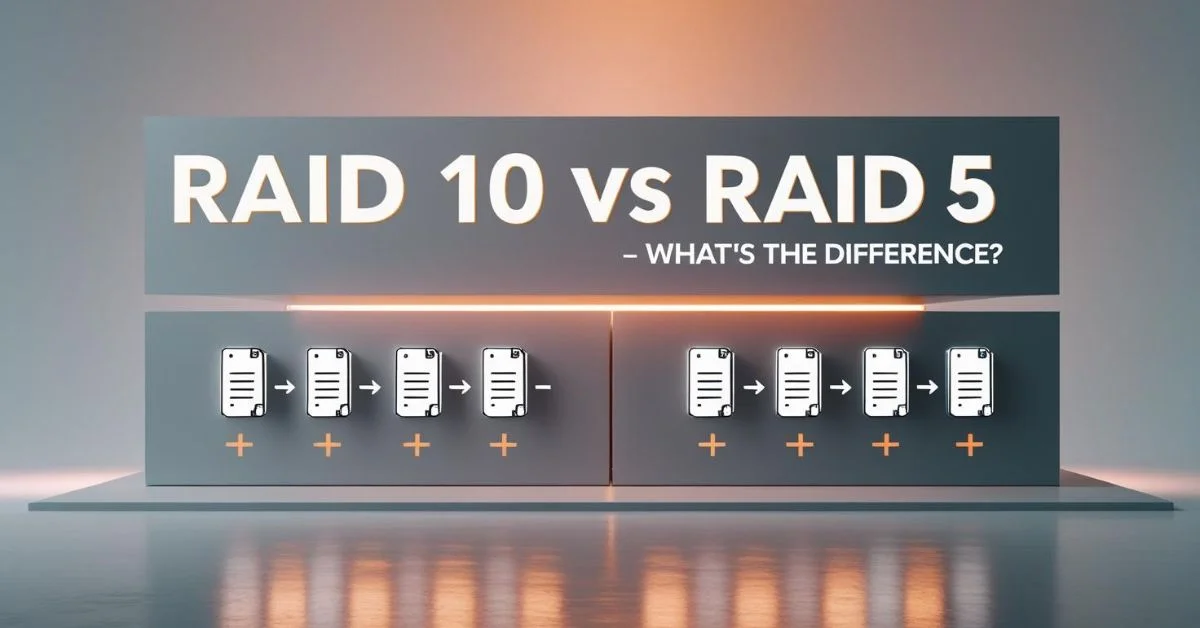Metropolitan Area Networks, or MANs, play a big role in connecting people, places, and systems across cities. A MAN covers a larger area than a Local Area Network (LAN) but is smaller than a Wide Area Network (WAN). It typically connects several buildings or institutions within the same city or town, allowing fast communication and sharing of data.
What Is a MAN (Metropolitan Area Network)?
A Metropolitan Area Network (MAN) is a type of computer network that connects multiple locations within the same city or metropolitan area. It is bigger than a Local Area Network (LAN), which is usually limited to a single building or campus but smaller than a Wide Area Network (WAN), which can cover entire countries or continents.
How a MAN Works?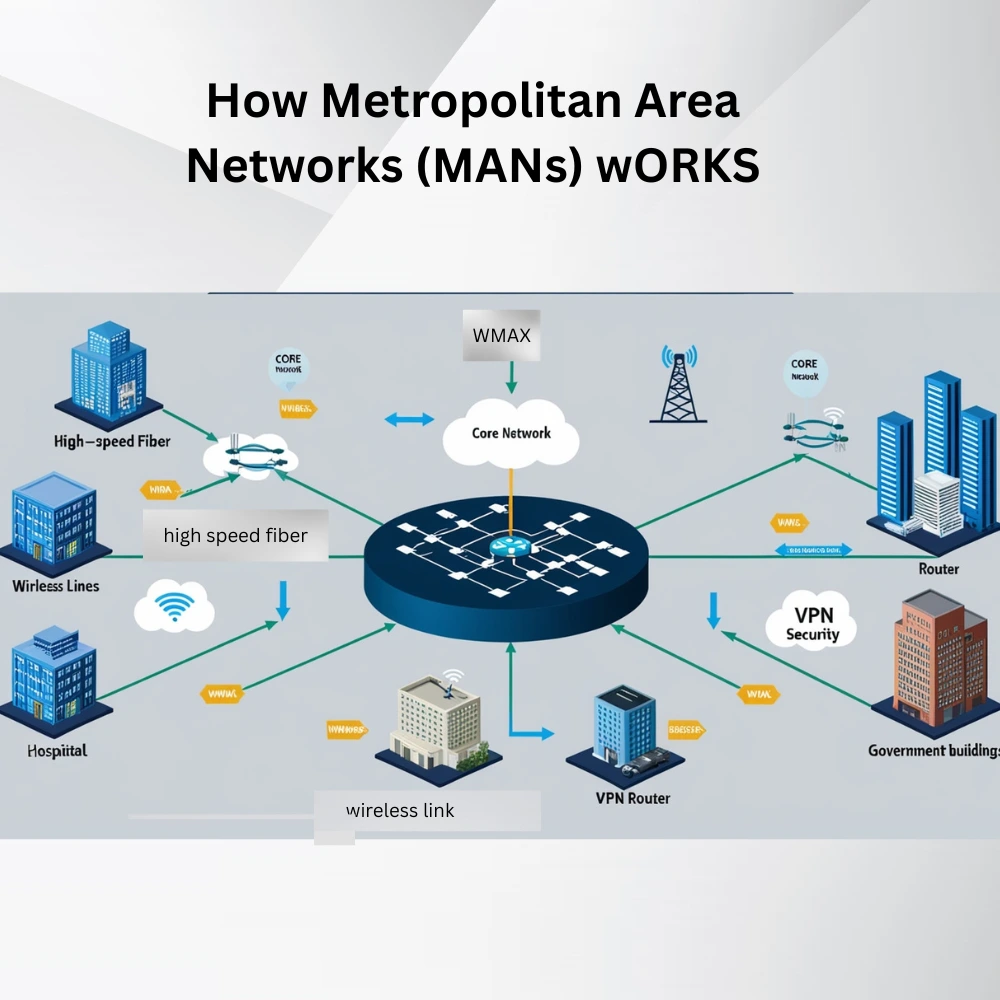
A MAN works by connecting different local networks (LANs) across a city using high speed communication lines like fiber optic cables, microwave links or wireless signals. These connections form a larger network that allows buildings, campuses, or facilities to share data and resources quickly.
At the center of a MAN is a core network, which acts like a highway for data. Smaller networks (like offices or schools) plug into this core using routers, switches, and access points. This setup allows:
- Fast transfer of files, video, and voice across locations
- Centralized control and network management
- Secure communication without depending fully on the public internet
In simple terms, a MAN ties together many smaller networks into one big, city wide system to keep everything connected and running smoothly.
Exciting Real World Uses (MANs)
There are many ways MANs are used in real life, and we’ll learn about them one by one in this article.
1. Smart Cities and Public Services
One of the most exciting uses of MANs is in the development of smart cities. A smart city uses digital technology to manage and improve services like traffic, public transport, lighting and security. MANs help bring all these systems together so they can communicate in real time.
Key applications include:
- Traffic control systems that adjust signals based on road conditions
- Smart street lights that turn on or off automatically to save energy
- Surveillance cameras that send live video to police stations
- Public Wi-Fi in parks, bus stops, and town squares
- Waste management systems that track when bins are full
These services rely on fast and stable connections, which MANs provide. They help city departments work together, share data quickly and make better decisions for the public.
2. Schools, Colleges, and Universities
Educational institutions benefit a lot from MANs. When different buildings like classrooms, libraries, labs, and administrative offices are spread across a large area, MANs help link them together.
In education, MANs are used for:
- Sharing files and study material across campuses
- Running video lectures and online classes smoothly
- Allowing access to research papers and databases
- Managing school software like attendance and grading systems
- Enabling communication among teachers, students, and parents
A MAN ensures that everyone at school or college stays connected and has quick access to learning resources.
3. Hospitals and Healthcare Facilities
Healthcare needs fast, reliable and secure communication. Hospitals and clinics in a city can be connected using a MAN so that patient data and test results can be shared quickly and safely.
In healthcare, MANs support:
- Connecting different hospital branches and clinics
- Sharing patient records and medical images like X-rays
- Enabling telemedicine services for remote consultations
- Monitoring patient conditions in real time
- Linking emergency response units like ambulances
This helps doctors and nurses provide better care. Patients can be diagnosed faster, and emergencies can be handled more efficiently.
4. Business and Corporate Offices
Many businesses have multiple offices in a city. MANs help them stay connected without needing to rely only on internet-based services. With a MAN, businesses can build a private network that is faster, more secure and cheaper in the long run.
Business use cases include:
- Sharing large documents like designs or videos instantly
- Running secure video meetings between departments
- Backing up files to a central server
- Connecting branches to use the same software and tools
- Tracking inventory and orders across different locations
This kind of network makes work easier, saves time, and improves teamwork between different teams in the company.
5. Internet Service Providers (ISPs)
MANs are also important for companies that provide internet services. They use MANs to deliver high speed internet to homes, businesses and government offices in a city.
In this context, MANs help ISPs to:
- Set up fiber optic cables between cities and neighborhoods
- Offer fast and reliable broadband to customers
- Support phone, TV, and internet services through one connection
- Manage customer data and billing systems
- Fix network problems quickly through monitoring tools
Without MANs, internet connections in cities would be slower and less reliable.
6. Government and Public Safety
Government departments stay connected and exchange data efficiently through MANs, enabling smooth communication across various offices. It also helps in keeping emergency services like police, fire stations, and ambulance teams linked.
Government use of MANs includes:
- Sharing data between courts, police stations and city offices
- Running emergency communication systems
- Using centralized control rooms to monitor CCTV cameras
- Coordinating disaster response like floods or fires
- Managing tax records, voting systems, and citizen services
MANs ensure that all these important departments can talk to each other quickly and respond to public needs without delays.
7. Media and Entertainment
TV stations, radio networks and event organizers also use MANs to transfer large files and broadcast content in real time. They need reliable and high speed connections to deliver news, shows and live performances.
Common uses in media include:
- Sending live video feeds between different studio locations
- Streaming events like concerts or sports matches
- Transferring video files for editing and airing
- Supporting Wi-Fi and ticketing at large event venues
- Coordinating security and press operations during events
These applications require smooth and fast data transfer, which MANs provide effortlessly.
8. Industrial and Manufacturing Zones
Factories and warehouses spread across a city use MANs to stay in touch with each other. They connect machines, systems and staff to make the production process more efficient.
In industrial settings, MANs are used for:
- Controlling machines through remote systems
- Tracking the production of goods in real time
- Monitoring safety alarms and sensors
- Managing stock levels and delivery schedules
- Communicating between the factory and head office
This allows manufacturers to save costs, reduce delays, and improve quality.
How MANs Work Across These Use Cases?
1. High Speed Fiber & Wireless Backbones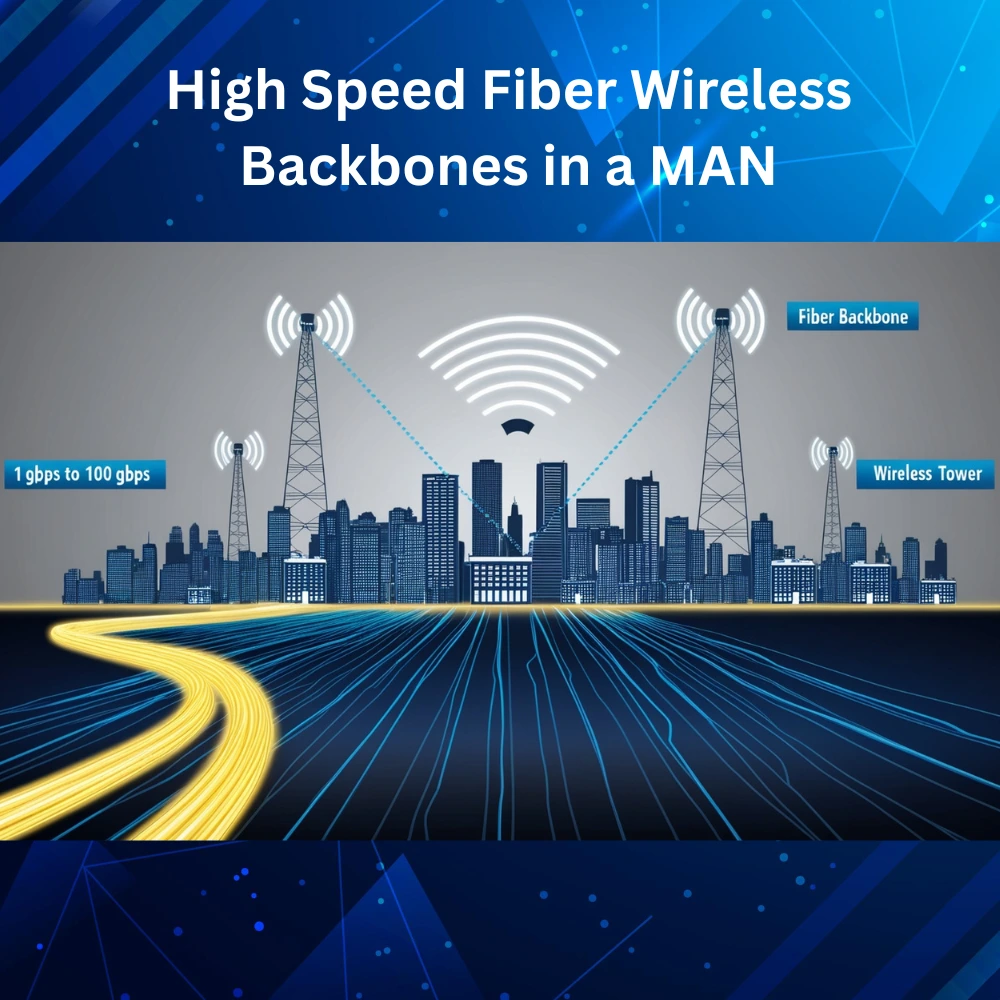
Metropolitan Area Networks (MANs) use advanced technologies like fiber optic cables, microwave links and millimeter wave connections to connect buildings and facilities across a city. These networks can offer blazing fast speeds ranging from 1 Gbps to 100 Gbps, making them ideal for transferring large amounts of data quickly and efficiently.
2. Wired vs. Wireless Integration
MANs can be built using both wired and wireless technologies, depending on the needs of the area:
- Wired Options: Include fiber optic cables, Ethernet, and dark fiber, which are highly reliable and suitable for the core backbone of the network.
- Wireless Options (WMAN): Use technologies like WiMAX (IEEE 802.16), microwave links and mesh networks to offer flexible and scalable connections, especially where laying cables is difficult.
3. Security & Resilience
MANs are built to ensure high levels of security and dependable performance. They often include features such as:
- Data encryption to protect information in transit
- Secure Virtual Private Networks (VPNs) for private communication
- Redundant paths to maintain service if one connection fails
- Access control systems to prevent unauthorized use
These features help ensure that MANs remain stable, secure, and effective, even under heavy load or during technical problems.
How MANs Make It All Possible?
A MAN is usually built using fiber-optic cables, wireless links, or both. These connections link various buildings, computers and devices throughout the city. The speed is much higher than what regular internet connections offer, and the network is more secure.
MANs offer several benefits:
- Fast data transfer between locations
- Reliable communication without depending on public internet
- Secure file sharing and system access
- Central control of the network by IT teams
- Scalability to add more devices or locations easily
Because of these advantages, many organizations prefer setting up MANs instead of using only the internet or individual networks.
Challenges and Future Possibilities
While MANs are useful, they can be expensive to build and maintain. The cables and wireless equipment need proper planning, skilled workers and money. Sometimes, different organizations have to work together, which can slow things down.
However, the future looks bright. Cities are becoming smarter and technologies like 5G, cloud computing and the Internet of Things (IoT) are growing fast. All of these need a strong network and MANs can provide the perfect foundation.
Conclusion
Metropolitan Area Networks (MANs) power everyday essentials home internet, traffic systems, online classes, medical records, and emergency responses. As cities grow smarter and more connected, MANs will become even more vital to how we live, work, and communicate.
